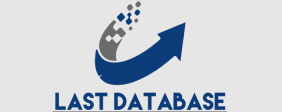With all the data that today’s marketers can access, there’s often still no substitute for the quality of information you can get from interviewing real people. In today’s whiteboard friday, we welcome rebekah cancino — a partner at phoenix-based onward and #mozcon 2016 speaker — to teach us the whys and hows of great interviews.
Click on the whiteboard image above to open a high resolution version in a new tab!
Video transcription
Hi, moz fans. I’m rebekah cancino. I’m a partner at onward, and I lead content strategy and user experience design. Today I’m here to talk to you about how to support the data you have, your keyword data, data around search intent, analytics with real life user interviews.
So recently, rand has been talking a little more about the relationship between user experience design and seo, whether it’s managing the tensions between the two or the importance of understanding the path to customer purchase. He said that in order to understand that path, we have to talk to real people. We have to do interviews, whether that’s talking to actual users or maybe just people inside your company that have an understanding of the psychographics and the demographics of your target audience, so people like sales folks or customer service reps.
Now, Maybe You’re a Super Data-driven
Marketer and you haven’t felt the need to talk to real people and do interviews in the past, or maybe you have done user interviews and you found that you got a bunch of obvious insights and it was a huge waste of time and money.
I’m here to tell you that coupling your data with real interviews is always going to give you better results. But having interviews that are useful can be a little bit tricky. The interviews that you do are only as good as the questions you ask and the approach that you take. So I want to make sure that you’re all set and prepared to have really good user interviews. All it takes is a little practice and preparation.
It’s helpful to think of it like this. So the data is kind Medical Mail List of telling us what happened. It can tell us about online behaviors, things like keywords, keyword volume, search intent. We can use tools, like keywordtool.Io or ubersuggest or even moz’s keyword explorer, to start to understand that. But with our interviews, what we’re learning about is the why.
This is the Stuff That Online Data Just Can’t Tell Us
This is about those offline behaviors, the EL Leads emotions, beliefs, attitudes that drive the behaviors and ultimately the purchase decisions. So these two things working together can help us get a really great picture of the whole story and make smarter decisions.
So say, for example, you have an online retailer. They sell mainly chocolate-dipped berries. They’ve done their homework. They’ve seen that most of the keywords people are using tend to be something like “Chocolate dipped strawberries gifts” or “Chocolate dipped strawberries delivered.” and they’ve done the work to make sure that they’ve done their on-page optimization and doing a lot of other smart things too using that.
But then they also noticed that their mother’s day packages and their graduation gifts are not doing so well. They’re starting to see a lot of drop-offs around that product description page and a higher cart abandonment rate than usual.







